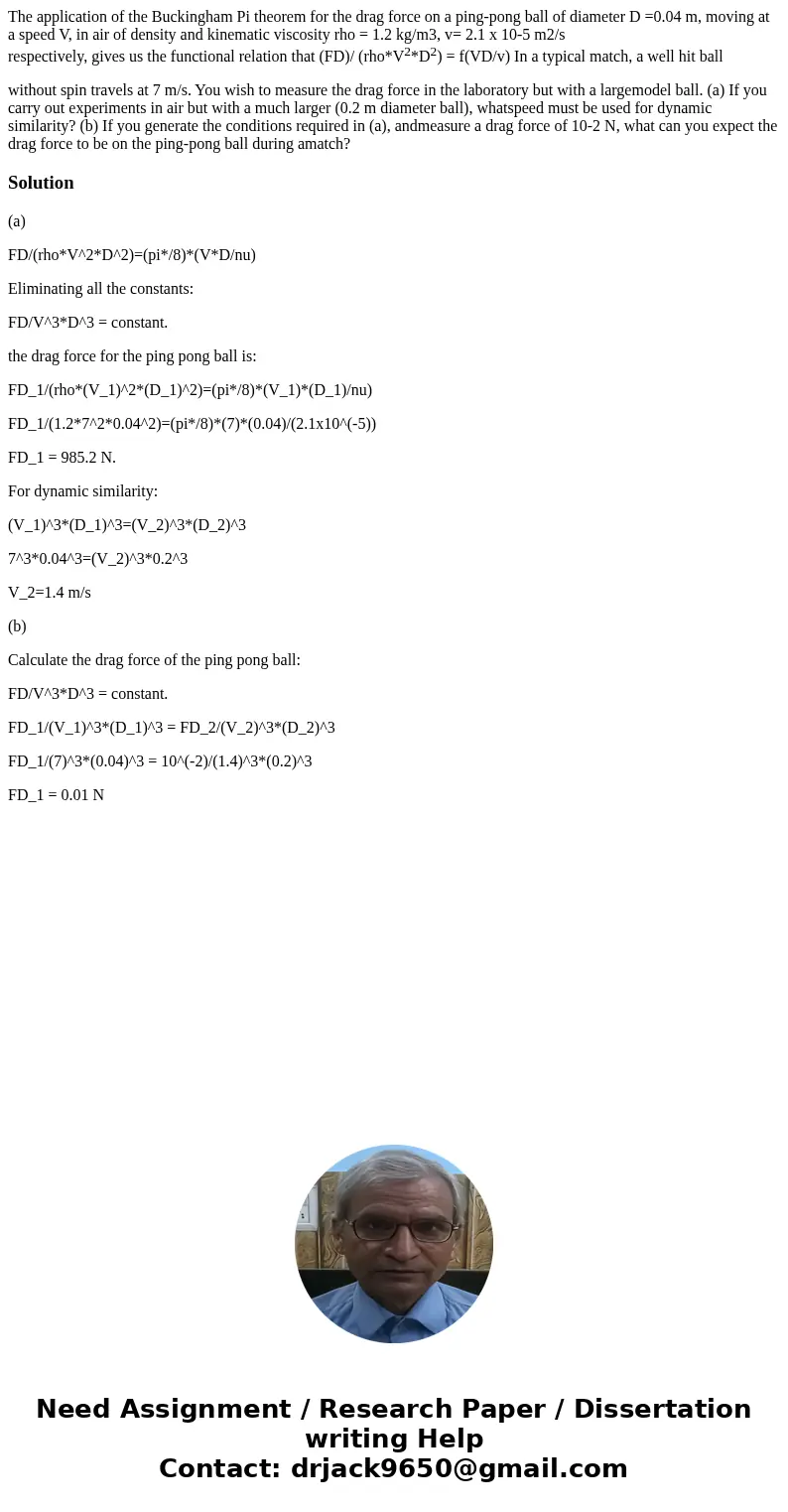The application of the Buckingham Pi theorem for the drag fo
The application of the Buckingham Pi theorem for the drag force on a ping-pong ball of diameter D =0.04 m, moving at a speed V, in air of density and kinematic viscosity rho = 1.2 kg/m3, v= 2.1 x 10-5 m2/s
respectively, gives us the functional relation that (FD)/ (rho*V2*D2) = f(VD/v) In a typical match, a well hit ball
without spin travels at 7 m/s. You wish to measure the drag force in the laboratory but with a largemodel ball. (a) If you carry out experiments in air but with a much larger (0.2 m diameter ball), whatspeed must be used for dynamic similarity? (b) If you generate the conditions required in (a), andmeasure a drag force of 10-2 N, what can you expect the drag force to be on the ping-pong ball during amatch?
Solution
(a)
FD/(rho*V^2*D^2)=(pi*/8)*(V*D/nu)
Eliminating all the constants:
FD/V^3*D^3 = constant.
the drag force for the ping pong ball is:
FD_1/(rho*(V_1)^2*(D_1)^2)=(pi*/8)*(V_1)*(D_1)/nu)
FD_1/(1.2*7^2*0.04^2)=(pi*/8)*(7)*(0.04)/(2.1x10^(-5))
FD_1 = 985.2 N.
For dynamic similarity:
(V_1)^3*(D_1)^3=(V_2)^3*(D_2)^3
7^3*0.04^3=(V_2)^3*0.2^3
V_2=1.4 m/s
(b)
Calculate the drag force of the ping pong ball:
FD/V^3*D^3 = constant.
FD_1/(V_1)^3*(D_1)^3 = FD_2/(V_2)^3*(D_2)^3
FD_1/(7)^3*(0.04)^3 = 10^(-2)/(1.4)^3*(0.2)^3
FD_1 = 0.01 N

 Homework Sourse
Homework Sourse